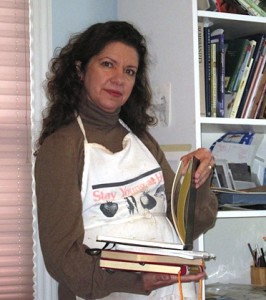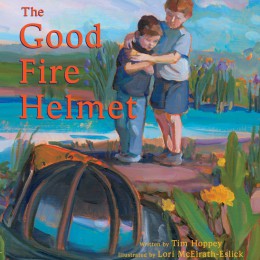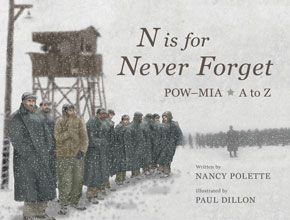“A work of art which did not begin in emotion is not art.”
—Paul Cezanne (French painter)
The doctors were deciding how to best save her life, and Lori McElrath-Eslick wanted nothing more than an image to distract her. Her visit to the doctor started as a routine check of a narrow heart-valve she has had since birth, but instead, her doctor found an unrelated and potentially fatal bulge in her artery. Often referred to as the silent killer, the discovery of the aneurysm changed everything for Lori.
Alone with the swirling thoughts of fear and uncertainty, she clung to the place she felt safest. A plein air painter and children’s book illustrator, Lori panned the sterile doctor’s office for anything that could inspire her…transport her. She found a photo of a bike leaning against a wall in France. She imagined herself there, among artists and breathtaking scenery. She dug into her backpack for her trusty sketchbook and she began to sketch her way through the waiting. Creating a world on paper took her mind off of the scary reality of impending open-heart surgery, and it gave structure to the emotions she was struggling to understand. Through the end of her sketching pencil, she embraced her own courage, and fear gave way to peace.
She went home to face the challenging preparation. She couldn’t help but to think about her mother, who had not survived surgery for a brain aneurysm just three years before. It was an emotional and perspective-changing process.
As part of her preparation for what was to come, Lori had to ask for a deadline extension for a book she was illustrating, The Good Fire Helmet by Tim Hoppey. The timing of her work in this children’s picture book, coming in the midst of her surgery and recovery, made both her perspective for own healing and her finished paintings all the richer.
The Good Fire Helmet is a story about two boys who must find their personal courage in the wake of their firefighter father’s death.
Thinking back to her involvement on the project, Lori says, “When I first got the story, I cried.”
 Nothing evoked quite as much emotion as the rescue scene. In the book, the younger boy, Christian, is swept away in a creek, letting go of his dad’s fire helmet. The older boy, Tommy, struggles to rescue his younger brother. The fire helmet, and symbol of their father’s bravery, floats within Tommy’s reach, but instead of trying to touch it, Tommy chooses to let it float by. He touches his heart instead, remembering that he has strength enough. He believes in his own power, and steps out past his fear to save his brother.
Nothing evoked quite as much emotion as the rescue scene. In the book, the younger boy, Christian, is swept away in a creek, letting go of his dad’s fire helmet. The older boy, Tommy, struggles to rescue his younger brother. The fire helmet, and symbol of their father’s bravery, floats within Tommy’s reach, but instead of trying to touch it, Tommy chooses to let it float by. He touches his heart instead, remembering that he has strength enough. He believes in his own power, and steps out past his fear to save his brother.
Lori sat with the words about finding personal strength and courage and, slowly, images began to emerge in her sketch book.
That’s how illustrations happen for Lori. She gets the story, sits with the words, finds emotion to put into the images, sketches the initial drawings, and as text is split, the illustrations begin to take their shape. She creates storyboards, and then after she receives final approval of mock-up drawings, she begins to paint. She couldn’t have known, as she prepped and sketched for The Good Fire Helmet, how much she was going to have to tap into her own personal courage during her work with that story.
For Lori, it is painting that brings things together. She illustrates stories of loss and hope… grief and love, and that collision of life with paper includes colors, shading, and emotional expressions of her characters. She felt lucky to be able to choose the oil paint medium for her illustrations for The Good Fire Helmet.
“The rescue took place outside. It was a natural choice to take it into how I love to paint,” she explains.
Sometimes it is images that connect us. Sometimes it is words. But in the case of The Good Fire Helmet, it is both.
Lori knew that the author of the story, Tim Hoppey, was a firefighter, but she didn’t know he had been a first responder in New York on 9-11. Many months after she began the project, she learned that the book had been offered in tribute to a friend of Hoppey’s who had died in the twin towers.
“I was blown over, when I found out,” Lori says. The story was emotional without that backstory, but when she learned about part of the motivation behind the book, it became even more powerful for her.
“All of our lives, we’ll face loss,” Lori explains. “(Stories are) one way to tie us together.”
Hoppey’s story became a tribute to his friend, and Lori too integrated images that connected inspiration and loved ones. There is a bird that appears in several illustrations in the book, purposeful placement of a watching loved one who has passed. The characters in her illustrations are generally inspired by people in her life, and The Good Fire Helmet contains a special tribute to a man who passed away after she had sketched him, but before the book was completed.
In that particular scene in the book, the younger boy, Christian, is at the doctor’s office wearing his dad’s fire helmet for courage. In the background, and out in the hallway, there is a little girl being measured for her check-up. A comforting grandfather waves gently at her, assuring her she is not alone in that office.
The gentleman who inspired the grandfather image had offered words of comfort to Lori when he learned of her imminent surgery. When Lori returned home from the hospital, she discovered that the man had passed away the morning of her operation. Her tribute to him can be found in the painting of that gentle grandfather.
“It is a beautiful and bittersweet tribute to a friend who passed,” she shares.
The surgery was successful for Lori, and in a recent blogpost, she writes, “One of the reasons I survived my surgery is to share with others that our lives are rich paintings, full of many elements: dark colors next to light, smooth next to texture. And when we tap into the present, when we find our favorite inch, our creativity can be such a peace-filled place, despite the circumstances that surround us.”
The Good Fire Helmet, and Lori’s work in it, offers a way to immortalize those who have died, but the book has also become a powerful tool to help children who may not know their own strength.
When Lori goes to schools to share the story with them, they hear her emotion, as she nearly chokes up with each reading. They connect on a real level with a woman who not only created the images of courage, she lived it.
Lori has the utmost respect for the doctors and nurses who work every day to help people, and she thinks of them as true heroes. “Those doctors saved my life,” she says.
In talking about her impressions of The Good Fire Helmet, Lori points out, “Love is the most important thing, and the children in that story have been loved.”
It is apparent Lori not only believes the sentiment about the importance of love, she lives it. She is currently participating in a study to help doctors uncover information about the genetic component of some aneurysms. “I just know it’s going to help somebody down the road,” she says.
Lori also volunteers in literacy programs like McMillan Elementary School’s Adopt-a-Reader Program in Muskegon, Michigan.
In 2011, she was a special guest during the end-of-year Family Reading Celebration for McMillan. The Good Fire Helmet was chosen as the Family Literacy Gift Book that year, and Lori had the opportunity to hand out books to the kids who had taken part in the program.
 This past year Lori started her own volunteer program to help kids learn how to illustrate. There are nine 12-year-olds in the Kids Sketchbook Club. The group meets once a month and she makes a concerted effort to include any student who wants to take part.
This past year Lori started her own volunteer program to help kids learn how to illustrate. There are nine 12-year-olds in the Kids Sketchbook Club. The group meets once a month and she makes a concerted effort to include any student who wants to take part.
“Their future is so dependent upon them thinking for themselves,” she says, “I ask them all the time, ‘What kind of idea do you see?’”
Maybe they’ll see courage. Maybe they’ll see strength. But no matter what they see, they are starting to look at things differently because of the heart of artist Lori McElrath-Eslick.
Through her experiences, she has learned what art does for her. It walks her through her own difficult moments, it adds dimension to the stories that are only complete with her paintings, and it fosters her connection with people she has known and loved through her life. Art is her passion, and it can be seen in each sketch, each brushstroke, or each tear she sheds as she reads. What came together for Lori in The Good Fire Helmet is the bound version of life lived through an artist’s eyes, and felt with an artist’s heart.
Web: www.eslickart.com













Inspirational story. “Stories are one way to tie us together.” So true.
This a good article about a good person because of whom the world is a better place. I am glad that Lori survived the aneurysm to continue to contribute her beautiful spirit and beautiful paintings to this earth.
Beautiful story and spirit! Thank you for sharing your life and gift with the world!
You and your work are inspiring, Lori! Thank you for sharing your story and your heart with so many.
Thanks for sharing this powerful story that shows the connection between a gifted artist’s life and their drawings.
Beautiful feature… lovely book… wonderful artist
I enjoyed reading this article. Lori did the beautiful cover illustration for my poetry book Traffic Stop (Finishing Line Press, 2011). I’m so glad that Lori survived to continue her painting and other artwork. The background information here is very well written.
Best wishes!
Janet Heller
Very touching, thanks for sharing a part of you.
Loved this post, Lori. Thank you for sharing your story and your gifts with others.
A very heartfelt story and article! I’m so glad that your surgery was a success! It’s true, there’s nothing quite like a life-challenging or changing experience to add more depth and emotion to a story or artwork.
It is always so powerful to learn what inspires a creative spirit. The world is so rich with beauty and Lori’s ability to capture that is a true gift.
Very touching!
Beautiful posting about a beautiful person! I’ve always loved Lori’s artwork. Thank you!